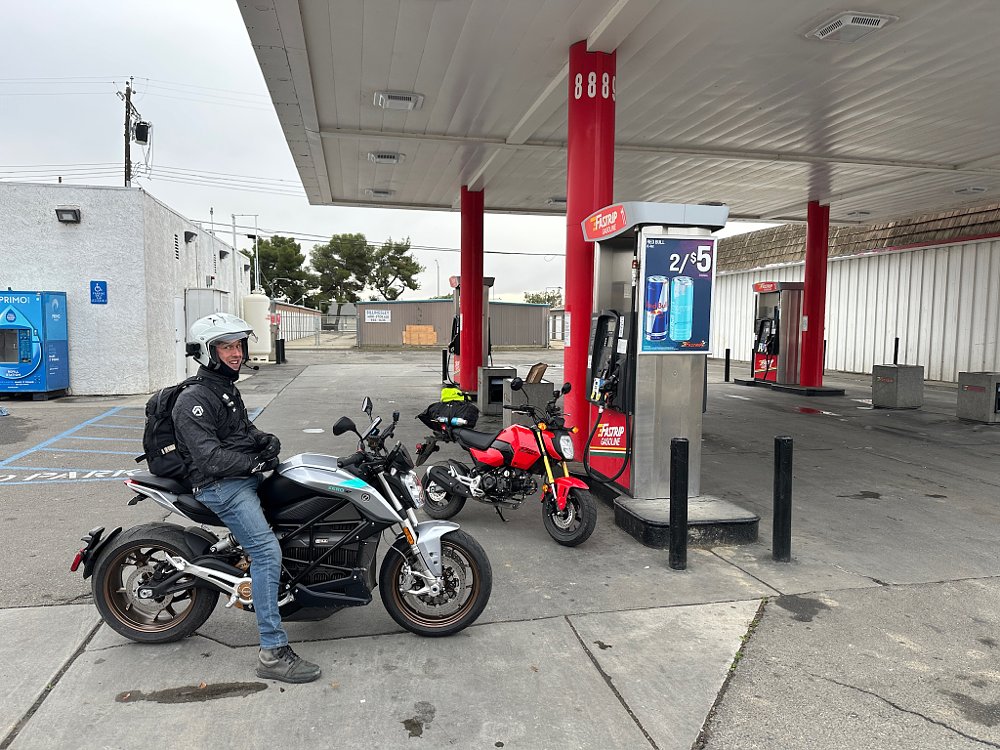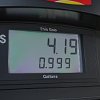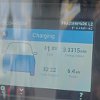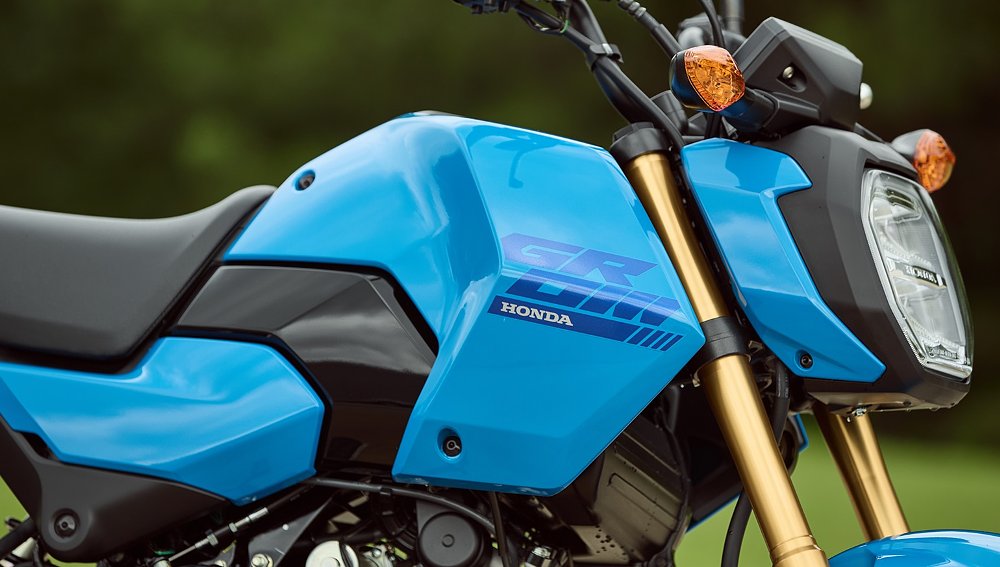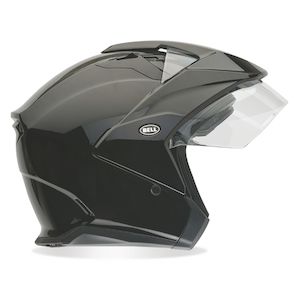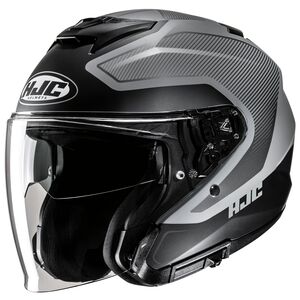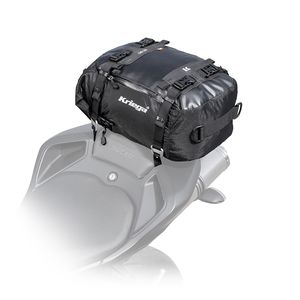Setting out on a CTXP adventure, we often assume we’re going to suffer. But, not like this.
When we took off across Wyoming trying to avoid paved roads, we knew there would be some curveballs in our route. And when we pointed two homemade motorcycle motorhomes toward the Grand Canyon we knew things would get weird at some point along the way.
This time, however, aiming a 125 cc Honda Grom and an all-electric Zero S on a 500-mile route with only $20 to spend on food, fuel, and lodging, there was always going to be a specific kind of hell to pay. We were probably not going to sleep well and we were almost certainly going to be hungry.

As we rode from Los Angeles to San Francisco we gambled on gas stops for the Grom and fumbled around looking for electricity for the Zero. We ate questionable food and even considered donating blood to earn a gift card and get some calories. The latest episode of CTXP (below) follows our strategies, hijinks, and failures.
Through all of it, we did learn a thing or two. The Grom’s total efficiency average was around 115 MPG and the Zero S ended with an average of nearly 255 MPGe. More on that “e” in just a minute, but very basically that was the foundational data we were after. Theoretically, those numbers can be applied to gas or electricity prices where you live, or any other situation in which you would take a road trip on one or both of these bikes. You’re welcome.
Some history
To back up just a bit, this is far from the first attempt to ride a “long” distance on machines that don’t seem to fit the bill. Ari and I have made something of a career of taking small or downright dumb motorcycles on road trips, and that’s not to mention famous and more ambitious people who have ridden thousands of miles on electric motorcycles or around the world on tiny ones.

The reason this trip felt different was that it seemed to offer a glimmer of motorcycles actually being the right answer, for once. As lovers of the pastime, we rationalize motorbikes in our commutes or adventures because it’s what we want. We can tell ourselves they’re easier to park or save money in some way, but usually they aren’t and they don’t. On paper, motorcycles are rarely the best solution to a transportation problem, in these United States, anyway. Until now.
For the humble sum of 20 American dollars to spend on fuel and food, we reckoned that there isn’t a gas-powered vehicle on the mass market that can get you farther than a motorbike with a small engine — that’s what we aimed to prove by using the Grom. Even the most efficient mainstream hybrid cars don’t get close to 115 miles per gallon. It’s more like half that.

Some hybrids claim in the hundreds of MPGe, or miles per gallon “equivalent,” and many electric-only cars and motorcycles do the same. If we adhere to the widely quoted calculation that 33.7 kWh of electricity contains approximately the same amount of energy as a gallon of gasoline, we can arguably avoid comparing apples to oranges. Call it apples to pears.
Of course, electricity is ultimately the cheat code for efficiency. If you start mixing in lithium-ion batteries and electric motors, the calculus changes. Electric vehicles are just more efficient than an equivalent gas-powered option — internal combustion engines only harvest about 30% of gasoline’s energy to push the car or motorcycle down the road, while an electric vehicle is more like 80%.

Plus, there’s the elephant in the vehicle-efficiency room, which is that it’s quite common to find charging stations for electric vehicles that are free to the public. Nevermind why. In theory you could climb into a $100,000 Hummer EV and punt hatchbacks off the road for 500 miles, all for zero dollars on fuel — pausing only to snack on Cheetos and Monster Energy while asking your dystopian, 9,000-pound Cinderella mirror, “Who is the fairest of them all?”
We even considered the other end of the horsepower spectrum. A bicycle doesn’t use any gasoline at all, and it’s perfectly feasible to pedal from L.A. to San Francisco. Trouble is, unless you have some sort of freakish physiology you will probably end up spending more than $20 on food.

In summary: Yes, we know, there are a lot of variables. The $20 exercise was a test of Grom efficiency and a little bit of rider resolve. If gas were $2.75 per gallon, any bike (or car) that gets 55 MPG could mosey up the freeway to San Francisco in half a day for 20 beans, no problem. But it’s not, and we didn’t. Even with free electricity, riding the Zero took some strategizing and personal resilience.
The upshot(s)
Speaking of that resilience, what ended up affecting me on this trip, perhaps more than anything, was the amount of time it actually took to travel nearly 500 miles. Forget how much energy each machine used, top of mind for most of the trip was how I was going to feed my own, metabolic engine. So, how long would it have taken the Honda Grom to complete this trip if it weren’t hindered by the electric Zero, and vice versa?
Based on total distance (about 475 miles), estimated average speed of the Grom, and what we know about road trips, it seems like it would be achievable in one long day on the road. That is, 12 to 15 hours of riding. Not necessarily relaxing, but well within reach as long as you don’t need much food, and you wouldn’t have a lot of time to eat anyway.
The Zero’s trip is a little harder to calculate since the route without the Grom could have been quite different — the Zero S can reach highway speeds, and beyond, after all. Then again, holding at a gallop for extended periods of time is especially difficult for electric motorcycles. To put it another way, the Zero benefitted a lot from the Grom’s pace, even if the route covered a significantly longer distance.
According to Zero, the most efficient way to travel on the S model that we used for this story is to keep speeds between 50 and 60 mph, and if possible only charge the battery between 5% and 90% of capacity. In other words, it would be to take the slower route and make the most use of the battery’s potential. Not exactly what we did, but close. Based on what we experienced for charge times on this trip, the Zero S needed to be plugged in for about 6.5 hours total (Level 2 charging is also a built-in limitation of Zero models, and DC micro charging is cool, but we still feel they are the best representation of the electric-motorcycle state-of-the-art). Add that to the 12- to 15-hour trip time and you’re looking at around 20 hours of travel. Still doable in a single day, sure, but a little less realistic.

However long it took, the energy usage and cost breakdowns were clear. Accepting an average California EV-charging cost of around 30 cents per kWh and an average gallon of gasoline costing about $4.75 (when we filmed, anyway), the bikes would have been pretty close. The Grom would have used nearly every penny of the 20 dollars on a 480-mile trip, and the Zero would have left four dollars and change in the rider’s pocket. Just about enough for a gallon of gas. How poetic.

The Grom’s fuel bill was less than that because the average fillup was closer to $4.00 per gallon (thank you, GasBuddy app). As a practical exploration of how much more efficient the Zero’s powertrain is than the teensy Grom, the total amount of energy used by the Zero S was equivalent to 1.89 gallons of gasoline, or less than half of the Grom’s consumption. If Ari could have filled up the Zero’s batteries with “gas energy,” he would have spent less than $8 to go 500 miles.

What’s that, you say? MSRP discrepancy between the bikes? Resources used in mining lithium for batteries? Economies of scale in manufacturing? Efficiency of engines versus motors and unfair energy-usage comparisons? Tire pressure? Temperature? Elevation? Eco-friendly transportation nirvana cannot exist? Kindly stop. You’re missing the best part.
On and off the beaten path
Let’s just enjoy this for a moment, perhaps the most satisfying aspect of our journey — simply being “better” than a car. The most efficient electric cages on the market only get around 5.5 miles per kWh and the Zero rang in at 7.5 miles per kWh for the trip, or what I like to call “much higher.” And the Grom’s 115 MPG? That speaks for itself. Overall, our numbers were superior to any gas- or electric-powered car. Don’t you dare point out that we got wet when it rained, we froze when it was cold, and we had practically zero cargo space.
Our self-imposed spending limit isn’t meant to fly in the face of actual hardship in the world. Instead, we hope it highlights a facet of motorcycling that is often cited casually and then forgotten about just as quickly: efficiency. We chose to explore that idea with a somewhat bizarre challenge, and we ended up on yet another path less travelled.
Usually, we motorcyclists go out of the way because that’s where the sights and experiences are richer and more spectacular. This time around we learned that there’s yet another, special kind of satisfaction in besting traditional four-wheeled transportation — if you want to use the least gas or electricity, a motorbike is the ticket. That is, as long as you’re willing to suffer a little bit.





